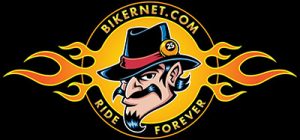


Excerpt from “The Art of the Motorcycle” Guggenheim Museum
“The Ner-a-Car was an oddity in the field of two-wheeled motorized transportation. Before its appearance in 1921, nothing quite like it had ever been seen on American roads. Developed by Carl A. Neracher and manufactured in both Great Britain (beginning in 1921) and Syracuse, New York (beginning in 1922), this unusual vehicle possessed design characteristics that allowed for a comparison between it and the automobile.

Indeed, there were plenty of features (aside from it's name) that invited the comparison. The chassis of the Neracar was constructed from steel members that enclosed the bottom portion of the vehicles engine and it's novel drive train. Unlike most motorcycles' motors, the Neracar engine was turned sideways, so that it's crankshaft was in line with its frame. This enabled the motor's exposed flywheel to turn at right angles to a friction operated “drive wheel” that transmitted the power (by means of a chain) to the rear wheel.

The box-frame construction allowed the 175 pound machine to have a very low center of gravity; the Neracar consequently exhibited outstanding handling characteristics. Salesmen commonly demonstrated the motorcycles ease of handling by riding while standing upright on the machine with their hands in the air. Photographs from the era depict a variety of unorthodox riding positions, including a man riding down the road, steering with his feet while his hands were handcuffed in front of him!


The 13-ci, two stroke Neracar engine was capable of propelling the vehicle to a top speed of 35 mph, and the Syracuse company claimed that their machine would travel 85 to 100 miles on a single gallon of fuel. The Neracar even enjoyed some success in competitive events.

In the 1923 National Six-Day Trials (which called for a sustained low speed over a 1400 mile course), Neracar-mounted riders claimed the first three places and the team prize.

Despite it's economy, ease of handling, and modest price, the Neracar did not sell in sufficient quantities to make it financially viable. In 1926 the investors who had financed the company halted production of the vehicle in Syracuse; in the same year, manufacturing ceased in Great Britain.”
-DKS

For me this is the quintessential example of American ingenuity and creativity during the roaring twenties. During the (from Wikipedia) “roaring twenties normality returned to politics in the wake of The Great War, jazz music blossomed, the flapper redefined modern womanhood, and Art Deco peaked. The era was further distinguished by several inventions and discoveries of far-reaching import, unprecedented industrial growth and accelerated consumer demand and aspirations, and significant changes in lifestyle.

Mass production made technology affordable to the middle class. Many of the devices that became commonplace had been developed before the war but had been unaffordable to most people. The automobile, movie, radio, and chemical industries skyrocketed during the 1920s. Of chief importance was the automobile industry. Before the war, cars were a luxury. In the 1920s, cheap mass-produced vehicles became common throughout the U.S. and Canada. By 1927, Henry Ford had sold 15 million Model Ts. In all of Canada, only about 300,000 vehicles were registered in 1918, but by 1929, there were 1.9 million. The automobile industry's effects were widespread, contributing to such disparate economic pursuits as gas stations, motels, and the oil industry.”

In the middle of this great American period Carl Neracher pitched this idea to moguls like King Gillette (of razor company fame) and received capital to start production on his Neracar idea.

Swooping lines, unconventional mechanical techniques and applications embody what became the Neracar. To me, this is American ingenuity done in a perfect period in America's past- the age of Art Deco.

If you have the chance to buy one of these, I suggest you do so. It is rumored that about 20 exist in complete form in the US and about 30-50 in UK. This example is pretty darn original for a 1924. It needs the proper rims and tires put back on and the correct headlight from what experts have gathered. I picked her up at auction for a mere $5,000. I believe she will stay in the family collection. Arguably one of the neatest bikes I have owned or feasted my eyes on.


–Rick
U.S. Choppers
2039 S. Lyon St
Santa Ana, CA 92705
714-546-4699
Appointments Only Please
http://www.uschopper.com/

